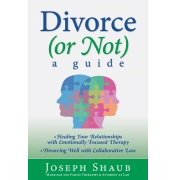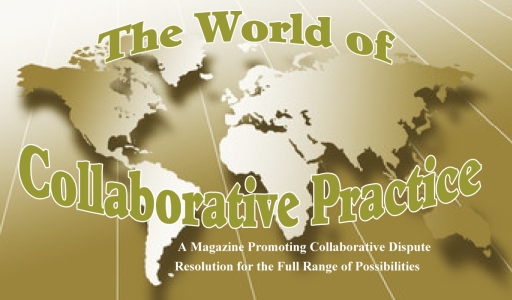
Tags
Related Posts
Share This
Divorce (or not) – a guide
Book authored by Joseph Shaub
Review by Kevin R. Scudder
This is a different (or not) read for clients and practitioners. The Guide is presented in two parts:
Part I: Divorce, A Guide to Divorcing with Wisdom, Sanity & Integrity
Part II: How to Choose and Use a Couples Therapist
Separately or together, there is something in the Guide for everyone, client, lawyer, coach, child specialist and financial specialist. The Guide is an important addition to the growing library of go-to material that helps us in our work with couples in crisis.
As a Licensed Marriage and Family Therapist and Attorney at Law, Shaub brings a unique viewpoint to the subject. This unique approach raises the question of why have Part I be about divorce and Part II about the decision to divorce (or not). At first glance the order of the books appear reversed. When asked this question Shaub had a simple answer:
“ . . . . .I think it is discordant and even a bit mean to invite someone who has made the painful, irrevocable decision to end an intimate relationship to sit and read about ways to heal that relationship. My experience has been that when you’re done, you’re done. Reading about the difficulty – and ultimate joy – in healing a wounded attachment bond isn’t what the divorcing need to hear about . . . . . “
See Ten (or eleven) Questions for Joseph Shaub
So if you have a client come to you who is making the the decision to divorce (or not), hand them Part II, in which Shaub uses his training in EFT –
Emotionally Focused Therapy; Susan Johnson, Ph.D. on EFT:
– and in attachment theory –
Attachment Theory; Dr. Wendy Walsh:
– to help the reader understand the nature of conflict, to maintain hope that divorce is not inevitable, and to normalize the conflict they are experiencing.
Shaub’s writing is a flowing combination of story telling, case studies, and historical context that engages the reader. Take, for example, Shaub’s seven observations of couples in therapy which, in themselves, should make you want to get online to buy the book(s) (or not):
- What You Think You Are Talking About Isn’t What You Are Talking About
- Labels Belong on Products, Not Your Partner
- You Certainly Are Different; You Probably Aren’t Incompatible
- Men and Women Are Both From Earth; But There Are Differences
- Anger Isn’t All It’s Cracked Up To Be . . . And It’s Not What You Think It Is Anyway
- “Overcontrolling” People Are Just Trying To Keep Chaos At Bay
- Defensiveness Is Natural, Automatic, And Destructive
If the decision of the client is to divorce, The Guide: Part I explains to the reader that they have a choice to divorce with wisdom, sanity & integrity (or not). We never want the client to make the (or not) decision because everyone who is reading this review has had experience with the (or not) divorce experience. It is not a pretty sight.
In Part I Shaub brings the reader to the 21st Century, literally. There is so much urban myth, so many Shadow Advisors, and thoughts of My Parents’ Divorce that affects how people view the legal system. Shaub simply calls it out in his aptly named Chapter on Divorce in the 21st Century, with subsections such as:
- Why Divorce is So Hard on People
- Dirty Laundry – Turning Love Into Hate
- Legal “Discovery” – Lots of Haystack, Not Much Needle
- The Settlement Conference – Modern Trial by Ordeal
- Fighting Over the Kids – Congratulations! You Have All Lost
- Trial – The Bitter End
Other chapters include The 7 Cardinal Rules of Legal Divorce (lawyers and judges get special attention here), The Psychology of Divorce, If You Can’t Avoid Divorce, Why Do It Right – Divorce and Children, Doing Divorce Right – Mediation, and Doing Divorce Right – Collaborative Law.
As you read Part I, from the practitioner’s view it may seem that Shaub is preaching to the choir. Well, he is. After 40 years as an attorney and 20 years as a LMFT, and experiencing the damage that litigation has done to individuals, their families, and children, he’s seen enough.
Visualize, however, the impact of the book on your client and how the information will help prepare your client for the divorce work that lies ahead, regardless of the process they choose. Imagine how much better prepared and informed they will be. Consider how being better prepared, and more resolved, will help the client go through the process they choose for their divorce.
Divorce (or not) is a good read, a fun read, and an educational read that belongs on your short list of books to pick up either on your own, or with your practice group.









Share your thoughts here and in your network.